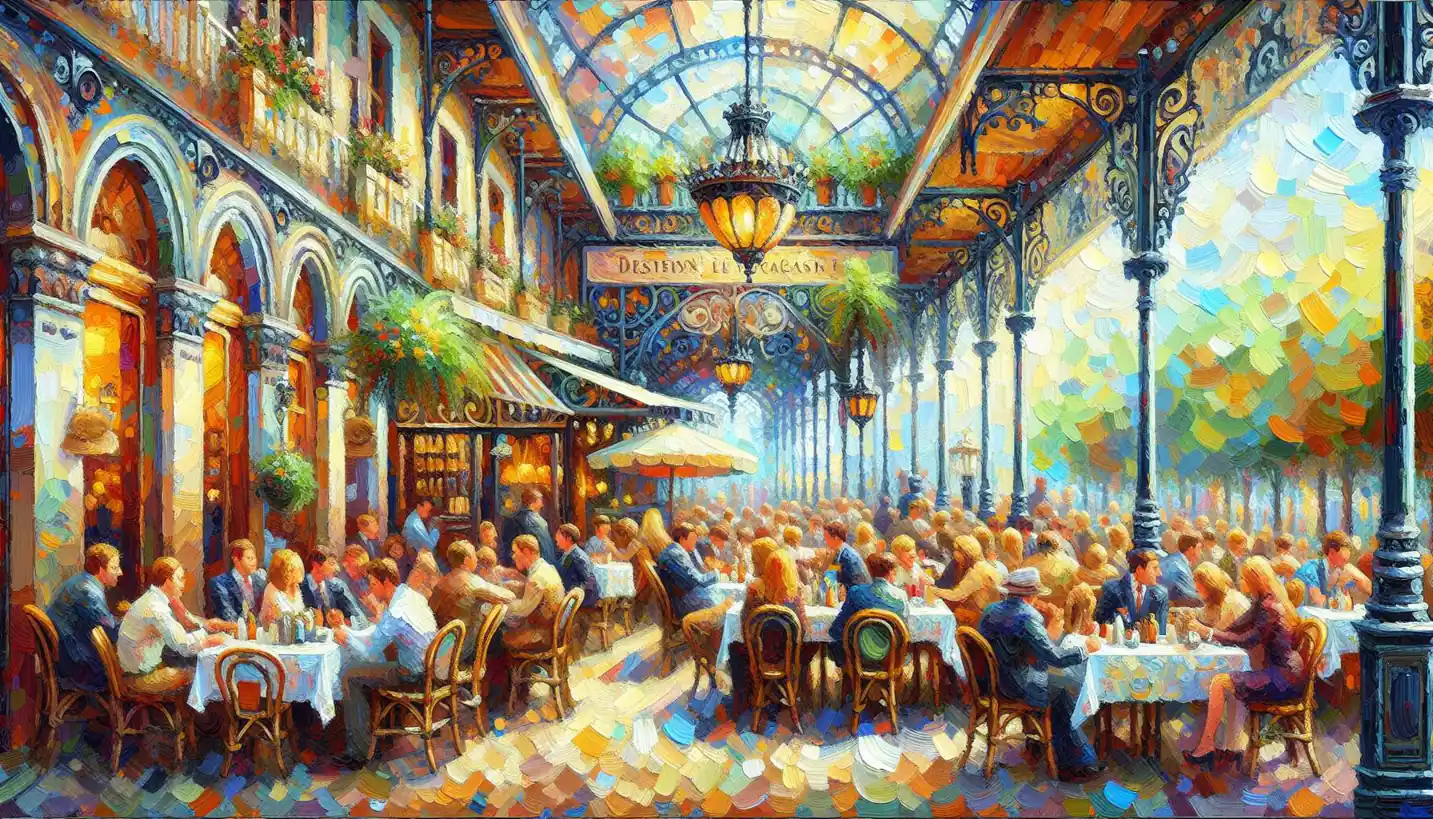· Art · 5 min read
Installation Art: Exploring Public Spaces and Captivating Imaginations
Installation art in public spaces captivates imaginations, transforming everyday environments into extraordinary ones. Discover how creativity reshapes the urban landscape.

Once you step into a park and suddenly find yourself surrounded by giant, colorful umbrellas floating above, you might wonder about the magic that turned an ordinary path into an extraordinary experience. That magic often belongs to the realm of installation art. So, what exactly is installation art, and how does it interact with public spaces?
Installation art is a form of artistic expression where artists create large-scale, three-dimensional artworks designed to transform a space. They’re like a blend of sculpture, architecture, and performance art, making you a part of the artwork itself. These installations often fill entire rooms, streets, or plazas, inviting you to walk around, touch, and sometimes even become part of the art.
The Heart of Public Spaces
Public art is all about engaging with people in everyday life. Installation art takes this to another level by turning ordinary places like a subway station or a city plaza into something new and thought-provoking.
Imagine strolling through your city and suddenly encountering a forest made out of recycled plastic bottles. This kind of installation art can spark conversations and make people think about important issues like recycling and environmental conservation. It’s a creative way to communicate powerful messages without using words.
Art Meets Audience
One thing that makes installation art so special is how it connects with its audience. Traditional art is often confined to museums and galleries, where you can look but not touch. Installation art, however, invites interaction. You can walk through it, touch it, and sometimes even alter it. This creates a personal connection between you, the art, and the space it inhabits.
Consider the example of Yayoi Kusama’s “Infinity Mirrors.” These installations feature rooms with mirrors on all sides, filled with countless colorful lights, giving the illusion of endless space. When you step inside, you become part of that infinite landscape, and suddenly, you’re not just a spectator but an active participant in the art.
A Historical Perspective
To understand installation art, it helps to take a journey back in time. The concept began in the 1960s and 70s when artists started to challenge traditional ideas about what art could be. They wanted to make art that wasn’t just something you looked at on a wall but something you experienced.
One of the pioneers of installation art was Allan Kaprow, who coined the term “happenings” to describe art events that were interactive and immersive. These happenings were the precursors to what we now know as installation art. Artists began to see spaces as blank canvases, ready to be transformed with imaginative designs.
Famous Installations That Captured Hearts
Over the years, many installation pieces have left people in awe. For example, Christo and Jeanne-Claude’s “The Gates” in Central Park, New York, featured 7,503 gates with flowing orange fabric, creating a path of color throughout the park. The project took over 25 years to come to fruition, showcasing the dedication and scale involved in such artworks.
Similarly, Olafur Eliasson’s “Weather Project” in London’s Tate Modern filled the gallery’s Turbine Hall with a giant sun-like disc, illuminating the space with a warm, orange light. Visitors lay on the floor, basking in the glow, as mist filled the air, turning a cavernous hall into a serene and almost otherworldly environment.
Inspiring Future Artists
Installation art is not just for the present; it continues to shape the future of art. With the rise of digital technology, artists are incorporating interactive digital elements into their work, allowing for even more dynamic and engaging experiences. You might encounter installations with elements that respond to your movements or even use augmented reality to overlay digital art onto real-world spaces.
This fusion of technology and creativity opens up endless possibilities, letting artists experiment and innovate like never before. In the future, installation art may become even more integrated with public spaces, turning cities into vibrant canvases where art and everyday life blur together seamlessly.
The Impact on Communities
Installation art has a unique ability to impact communities positively. When placed in public spaces, these artworks can draw people together, foster dialogue, and inspire community pride. Whether it’s a temporary installation or a permanent piece, the presence of art in everyday places can enhance our sense of identity and belonging.
In cities where installation art is prevalent, there’s often a noticeable boost in cultural tourism, bringing visitors who are eager to experience these unique artworks. This, in turn, supports local businesses and enriches the cultural fabric of the area.
Your Turn to Explore
Next time you’re out and about, keep an eye out for installation art in your city. It might be an unexpected statue in a park, a mural that transforms a blank wall, or a temporary piece that changes the way you see your surroundings.
Installation art is a celebration of creativity and imagination, bridging the gap between artists and the public. It transforms mundane spaces into thought-provoking arenas, encouraging interaction and engagement. So, take a step closer, become part of the art, and let your curiosity lead the way.


